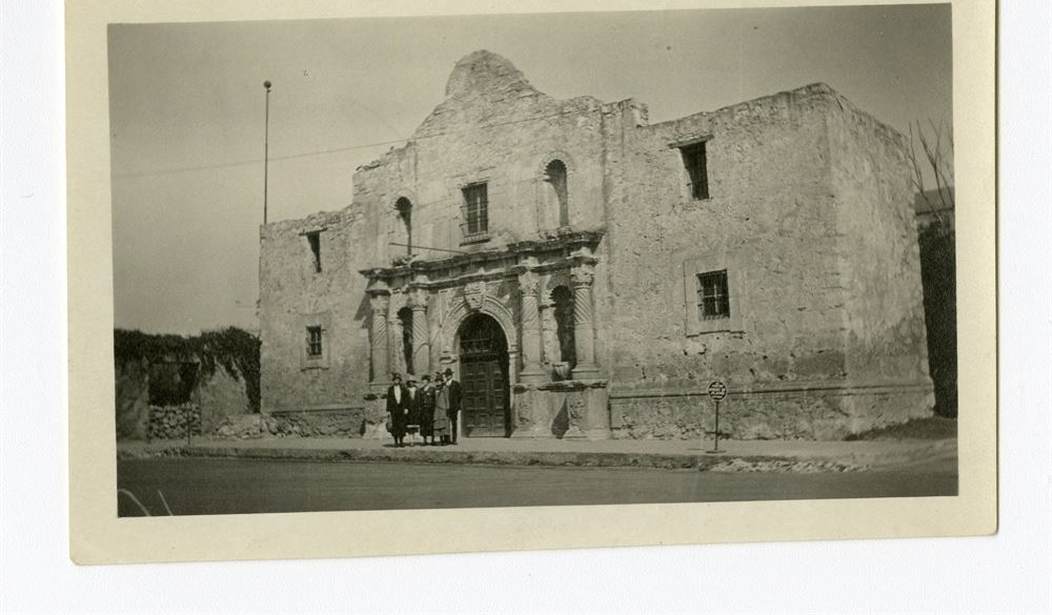I’ve been around the Alamo occupationally and through advocacy for six or so years now. It’s by far the most contested patch of ground in Texas, if not the United States. I’m not the first to observe that too many people really enjoy fighting about the Alamo, but too few spend much time or energy fighting for the Alamo.
The difference between the two is vast.
Fighting for the Alamo means exactly that: preserving the structures that still exist, researching the history, telling its story accurately through means as varied as a museum, reconstruction, and living history, and making sure its story is remembered.
Fighting about the Alamo is about none of that. It’s about personal and group political agendas that often build their power at the Alamo’s expense, without any evident regard for the consequences to the Alamo. Such fighting has already broken one Alamo preservation project and it’s threatening the current one.
As former Alamo CEO Doug McDonald wrote this past week, fighting for the Alamo should be the priority, especially in the Alamo City — San Antonio, Texas. But it isn’t.
For example, the San Antonio Conservation Society, in their application for the State Antiquities Landmark designation for the Woolworth Building wrote that “the San Antonio Express-News photographed history in the making at the Woolworth’s cafeteria, where the store’s equal service policy also helped San Antonio acquire the distinction of being the first city in the South to receive publicity for the desegregation of its lunch counters.”
The Conservation Society opposed the demolition of the Woolworth Building, so to support their political aims, they presented what they wished to be true as historical fact to the Texas Historical Commission. In reality, the photograph of “history in the making” wasn’t taken at the Woolworth Building (it was taken at the Kress Building) and San Antonio wasn’t the first southern city to receive publicity for lunch counter desegregation. Even though these assertions were totally discredited by the Alamo, the “truth” presented by the Conservation Society continues to be advanced today.
Read the whole thing. The San Antonio Conservation Society appears to prioritize conserving everything but the very place that enabled the city’s existence and put it on the map historically. This is not conservation, it’s myth-making.
The myth-making continues. This past week Bexar County Commissioner Tommy Calvert convened a “forum” to discuss, from one side, the specious claims contained in a book that literally calls for forgetting the Alamo. The authors of that book make outrageous claims and then strike snarky poses when confronted with real facts. They claim they only want a “dialogue” but run away from real debate after they state that the Alamo must no longer be considered the Shrine of Texas Liberty.
When one makes such a claim, and the many other outlandish claims peppered throughout the book, one should expect pushback.
But the book itself is of less concern than San Antonio’s behavior towards it. Books about history come and go, and some are better than others. Forget the Alamo is not a good book. Its research is shoddy to the point of incompetence. It pushes narratives that practically no honest student of the Texas Revolution regards as true: that the Texas Revolution was really about slavery and “white supremacy.” None of that is true. It is true that the chief historian at the Texas State Historical Association believes that, as Forget claims, the Alamo is a monument to white supremacy. But Dr. Walter Buenger is not a historian of the Texas Revolution. His specialty is the Jim Crow era, which provides a lens through which he evidently sees all of Texas history. The same seems to go for the three authors of Forget, none of whom, it’s worth pointing out, is a historian. One is a business columnist and another is a Democrat political operative. Their book was not peer-reviewed. I’m told one prominent Texas history writer was shown a draft of the book before publication and warned them not to go forward with it. Some of those quoted in the book say the authors approached them under false pretenses. None of that has slowed down their PR juggernaut.
The facts the authors will not debate include the following. Tejanos fought and died at the Alamo and Tejanos were slightly more likely to fight for the revolution than were the Anglos who had settled in Texas, according to historian Dr. Jody Edward Ginn. An abolitionist fought and died at the Alamo. His name was Amos Pollard. Stephen F. Austin wrote that the Texas cause was identical to the American Revolution. The Texas Declaration of Independence doesn’t even mention slavery as any cause of the revolution. It’s not there. Most Texians didn’t own slaves at the time. Santa Anna didn’t march to Texas to free slaves or anyone else. He’d tossed out the constitution and had multiple rebellions on his hands. His go-strategy was to go to war against his own people and massacre them, as he did in Zacatecas in 1835. He perpetrated two more massacres — war crimes — on Texas soil, one of which was at the Alamo.
But the media and Commissioner Calvert treat this book as some sort of revelation of hidden facts that, once stated, cannot be questioned.
Calvert’s forum provided no balance. Skeptics of the book were relegated to questioning from the audience. Along with himself and the three authors, he included another non-historian, Mario Salas, who is known to push his own discredited myth about the Texas Revolution.
The San Antonio Express-News had this to say about the Alamo preservation project in 2016:
The Alamo is one of three things the Editorial Board plans to focus on repeatedly this year. The timing of this is to influence the outcome of the master planning process for Alamo Plaza undertaken jointly by the city and the state…We envision a restoration of the site to its 1836 footprint as much as possible, a world-class Alamo museum and visitors center, and surrounding businesses that don’t disrespect the history attached to the Cradle of Texas Independence.
Our Agenda 2016 editorials will be urging bold action.
That was then. In 2021, the same newspaper has not lifted a finger to support the Alamo but instead has pushed editorial after editorial smearing the Alamo defenders and all but rehabilitating the reputation of the man who butchered them in the heart of San Antonio, dictator Santa Anna. In place of the city’s own real history, with streets named after the defenders such as Losoya and Crockett, the largest newspaper there is pushing a false political narrative that will damage, perhaps irreparably, the Alamo.
This is both dishonest and unwise. Destroying the Alamo’s story will destroy its reputation and dry up donations it will need to build the world-class museum that the newspaper said just five years ago that it deserved. Who would want to write a check of any size for a “monument to white supremacy”? Who would want to visit such a place? Who would want to do anything to protect it? If the Alamo is a monument to white supremacy that no longer deserves to be called the Shrine of Texas Liberty, why not bulldoze it and build a restaurant or something else? What should be done with those streets named after men such as Jose Toribio Losoya, the lone defender who was born in the Alamo? Was he fighting for white supremacy and slavery, too?
Does San Antonio understand that it’s cutting out its own heart?
The facts are available and always have been. Texas Reader has diligently fact-checked the new false narratives here and here. For instance, regarding the book’s claims the Texas Revolution was about slavery, here are the facts
The truth of the matter, which the authors would have discovered if they had done their research, is that slavery was not illegal in Mexico at the time of the Texas Revolution.
Here’s what really happened:
In 1829 an attempt to ban slavery failed in the Mexican Congress. President Guerrero was granted sweeping powers to thwart Spain’s attempt to retake the country. Jose Maria Tornel, the equivalent of the U.S. Speaker of the House, persuaded President Guerrero to use those emergency powers to abolish slavery in Mexico. (A little over two months later the president would exempt Texas.)
Then in 1831, eighteen months after Guerrero issued his decree banning slavery, it was annulled by the National Congress, along with most of the late president’s (they executed him) emergency decrees. Slavery was legal in Mexico at the time of the Texas Revolution. It remained legal until 1837, when the National Congress passed an emancipation law nearly a year after Texas had won independence.
It takes diligent research using original, primary sources to find these facts. But by the time a diligent, honest researcher does his or her homework, San Antonio has spent another week attacking the Alamo through its media and its political officials such as Commissioner Calvert and its far-left activists such as Mr. Salas.
This is shameful.
It’s debatable whether San Antonio deserves any role in the Alamo project going forward anymore. At all. The Alamo City would clearly rather fight about the Alamo than fight for it.








Join the conversation as a VIP Member